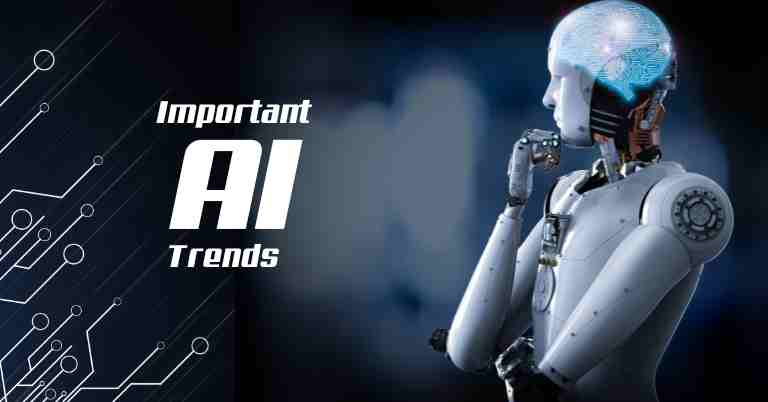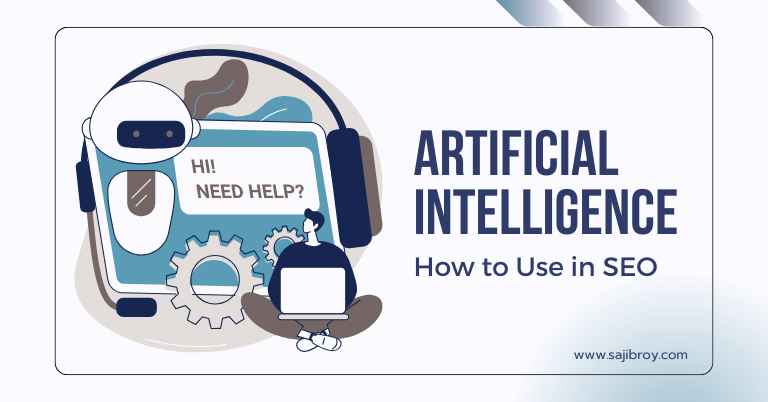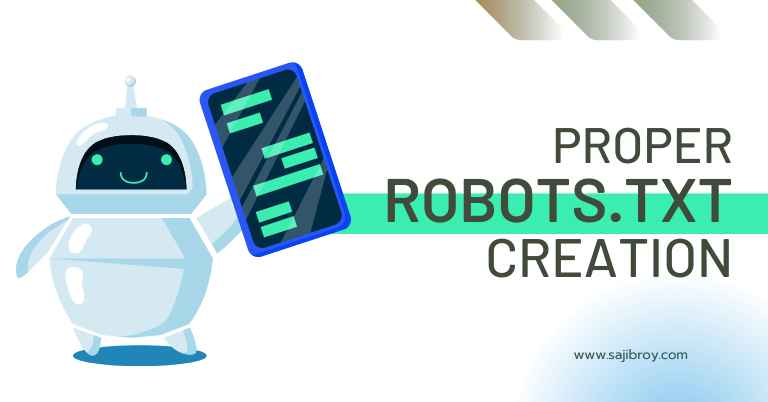In 2024, some important AI trends include low and no-code environments, powerful generative AI platforms, and a focus on sustainability. These trends are set to revolutionize the way we develop software, empower AI innovation, and address environmental challenges.
Federated learning, GANs, XAI, reinforcement learning, and transfer learning are also emerging trends in deep learning and artificial intelligence. Embracing AI-driven solutions in healthcare and leveraging edge AI to empower IoT are additional areas that will witness significant advancements in the coming years.
Overall, the AI landscape in 2024 is expected to be smarter, faster, and more responsible, enabling businesses and industries to harness the power of AI for transformative outcomes.
Let's See the Topic Overview
Rise Of Low-Code And No-Code AI Development Platforms
In the ever-evolving landscape of artificial intelligence (AI), the emergence of low-code and no-code AI development platforms is set to reshape the way software engineering is approached. These platforms allow developers to create AI-powered applications with minimal coding knowledge, offering a faster and more accessible way to harness the power of AI. Let’s delve into the world of low-code and no-code software engineering and explore its advantages, benefits, successful implementations, and impacts on AI development and accessibility.
Introduction to low-code and no-code software engineering
Low-code and no-code software engineering refers to the development of applications using platforms that require minimal or no coding skills. These platforms provide visual interfaces and drag-and-drop functionality, allowing users to build complex workflows, applications, and AI models without writing extensive lines of code. The rise of low-code and no-code AI development platforms has opened doors for individuals without extensive coding backgrounds to enter the world of AI development.
Advantages and benefits of low-code and no-code AI platforms
Low-code and no-code AI platforms offer numerous advantages and benefits that make them attractive to both developers and businesses. Some of the key advantages include:
- Simplified development process: With visual interfaces and drag-and-drop functionalities, developers can create AI applications and models without the complexities of traditional coding.
- Reduced development time: By eliminating the need for extensive coding, low-code and no-code platforms enable developers to build applications and models in shorter timeframes.
- Accessibility for non-technical users: These platforms open up AI development to individuals without coding backgrounds, democratizing access to AI technologies.
- Higher productivity: Low-code and no-code platforms streamline the development process, enabling developers to focus on high-level tasks and accelerate project delivery.
Examples of successful implementations
There have been numerous successful implementations of low-code and no-code AI platforms across various industries. Companies like Microsoft, Google, and Amazon have developed their own platforms that offer powerful AI capabilities without the need for extensive coding knowledge. One example is Microsoft’s Power Apps, which allows users to build AI-powered applications using pre-built components and intuitive visual interfaces.
Another successful implementation is Google’s AutoML, which enables users to create custom AI models without writing complex algorithms. Amazon’s AWS AI services also provide low-code and no-code solutions, making it easier for businesses to integrate AI into their existing systems.
Impacts on AI development and accessibility
The rise of low-code and no-code AI development platforms has significant impacts on the field of AI development and accessibility. These platforms lower the entry barriers for individuals without traditional coding skills, enabling a broader pool of talent to engage in AI development. This leads to increased innovation, as a wider range of perspectives and ideas can be brought to the table.
Furthermore, low-code and no-code AI platforms accelerate the development lifecycle, allowing businesses to quickly prototype and deploy AI solutions. This agility promotes faster experimentation and iteration, ultimately leading to more refined and reliable AI models.
Overall, the rise of low-code and no-code AI development platforms is revolutionizing the way AI is developed and accessed. With simplified processes, reduced timeframes, and increased accessibility, these platforms empower a new generation of AI developers and drive innovation in the field.
Embracing AI-driven Healthcare Solutions
Integration of artificial intelligence in the healthcare industry
The integration of artificial intelligence (AI) in the healthcare industry has revolutionized patient care, diagnosis, and treatment. AI-driven healthcare solutions have the potential to enhance accuracy, efficiency, and overall patient outcomes. With the ability to analyze large amounts of medical data and identify patterns, AI technologies can assist healthcare professionals in making informed decisions and providing personalized care.
Improved diagnostics and personalized treatment options
One of the key benefits of AI integration in healthcare is the improvement of diagnostics and the development of personalized treatment options. AI algorithms can analyze patient data, such as medical records, lab results, and genetic information, to identify potential health risks and predict the likelihood of certain diseases. This enables healthcare providers to intervene earlier and provide tailored treatment plans for each patient, leading to better health outcomes.
Potential challenges and ethical considerations
While AI offers tremendous potential in healthcare, it also comes with challenges and ethical considerations. Privacy and security of patient data, algorithm bias, and the potential for AI to replace human decision-making are important concerns that need to be addressed. It is crucial to ensure the responsible and ethical use of AI technologies in healthcare to mitigate risks and protect patient rights.
Real-world examples of AI-driven healthcare solutions
There are already real-world examples of AI-driven healthcare solutions that highlight the potential and impact of AI in the industry. One example is IBM Watson’s oncology platform, which utilizes AI to assist oncologists in diagnosing and treating cancer patients more effectively. Another example is the use of AI-powered chatbots in telemedicine, providing patients with 24/7 access to basic medical advice and reducing the burden on healthcare professionals.
Edge AI: Empowering Internet Of Things (IoT)
Exploring the concept of edge AI
Edge AI, also known as edge computing, is revolutionizing the way Internet of Things (IoT) devices function. It refers to the process of running AI algorithms directly on edge devices, such as sensors, cameras, and other IoT devices, rather than relying on cloud-based servers for data processing. By bringing AI capabilities to the edge, organizations can empower their IoT devices with real-time decision-making capabilities and reduce dependency on cloud resources.
Enhancing IoT capabilities with Edge AI
Edge AI enhances the capabilities of IoT devices by enabling them to make on-the-spot and data-driven decisions without relying on constant cloud connectivity. This allows for faster response times, reduced latency, and improved reliability, making IoT solutions more efficient and effective.
IoT devices equipped with edge AI can autonomously analyze sensor data and perform complex tasks locally, without the need for continuous cloud interaction. This not only reduces the load on cloud servers but also enhances privacy and data security by minimizing data transmission and storage.
Benefits and applications of edge AI in various industries
Edge AI has wide-ranging benefits and applications across various industries:
| Industry | Benefits of Edge AI | Applications |
|---|---|---|
| Manufacturing | – Real-time monitoring and quality control – Predictive maintenance and machine failure prevention – Enhanced worker safety |
– Automated inspection and defect detection – Predictive maintenance of machinery – Worker safety monitoring |
| Retail | – Personalized customer experiences – Real-time inventory management – Loss Prevention |
– Customer behavior analysis for targeted marketing – Shelf monitoring and product placement optimization – Theft detection and prevention |
| Healthcare | – Remote patient monitoring and telemedicine – Early disease detection and prevention – Enhanced diagnostics and treatment planning |
– Wearable health monitoring devices – AI-assisted diagnosis – Drug discovery and personalized medicine |
Future prospects and potential challenges
The future of edge AI in IoT looks promising, with advancements in edge hardware and AI algorithms. The widespread adoption of 5G technology will further accelerate the growth of edge AI by providing faster and more reliable network connectivity.
However, there are some challenges that need to be addressed. One of them is the limited computational capabilities of edge devices, which can be a barrier to deploying complex AI models. Additionally, ensuring data privacy and security becomes crucial when AI algorithms are running directly on edge devices, as any vulnerabilities can lead to sensitive information being compromised.
Overall, edge AI is poised to revolutionize the IoT landscape by empowering devices with real-time decision-making capabilities, reducing latency, and improving efficiency. Organizations across industries can leverage the benefits of edge AI to gain a competitive edge and unlock new opportunities for innovation.
Generative AI: Creating Powerful AI Platforms
In the ever-evolving world of artificial intelligence (AI), generative AI has emerged as a powerful technology that is revolutionizing the way AI platforms are created and utilized. By understanding generative AI and its applications, exploring its innovative use cases, and addressing the ethical implications and concerns surrounding it, we can gain insights into the future advancements and impact it will have on the AI industry.
Understanding generative AI and its applications
Generative AI refers to a type of AI that focuses on creating original and unique content. It goes beyond traditional AI techniques by enabling machines to learn and generate new data rather than simply analyzing existing data. This innovative technology has a wide range of applications across various industries, including:
- Art and design: Generative AI algorithms can create unique artwork, designs, and music, inspiring new forms of creativity.
- Content creation: From writing news articles to generating social media posts, generative AI can automate and enhance content creation processes.
- Product design: AI-powered generative models can assist in product design by generating multiple design variations, helping designers explore possibilities.
- Video game development: Generative AI can generate realistic characters, scenes, and even entire game levels, enhancing the gaming experience.
- Drug discovery: By analyzing vast amounts of data, generative AI can assist in drug discovery processes, potentially speeding up the development of new treatments.
Innovative use cases of generative AI
The innovative applications of generative AI are expanding rapidly, opening up new possibilities and transforming industries. Some notable use cases include:
- Generative Adversarial Networks (GANs): GANs are a powerful generative AI approach that consists of two neural networks – a generator and a discriminator. GANs can create realistic images, videos, and audio, enabling applications such as deepfake detection and synthetic data generation.
- Style transfer: Generative AI can apply artistic styles to images, transforming them into unique and visually appealing compositions.
- Chatbots and virtual assistants: By leveraging generative AI, chatbots and virtual assistants can respond to user queries with dynamic and contextually relevant answers.
- Automatic video editing: AI-powered generative models can analyze videos and automatically generate engaging edits, saving time and effort in the video editing process.
- Personalized marketing: Generative AI enables the creation of personalized marketing content and recommendations based on individual preferences and behavior patterns.
Ethical implications and concerns surrounding generative AI
While the potential of generative AI is immense, it also raises ethical concerns that need to be addressed. Some of the ethical implications include:
- Fake content and misinformation: The ability of generative AI to create realistic and convincing content raises concerns about the spread of fake news, fraud, and misinformation.
- Privacy and data security: The use of generative AI requires access to large datasets, raising concerns about the privacy and security of personal information.
- Unintended biases: Generative AI models can unintentionally incorporate biases present in the training data, perpetuating social and cultural biases in generated content.
- Intellectual property rights: As generative AI generates original content, issues regarding intellectual property rights and ownership may arise.
Future advancements and impact on the AI industry
The future of generative AI holds great promise. Advancements in this field will lead to more sophisticated and creative AI platforms. Some potential future advancements and their impact on the AI industry include:
| Advancement | Impact on AI Industry |
|---|---|
| Improved content generation | AI platforms will be able to generate high-quality and hyper-personalized content at scale, revolutionizing industries like marketing and entertainment. |
| Enhanced creativity support | Generative AI will assist creative professionals in generating ideas, designs, and artistic concepts, fueling innovation. |
| Automated problem-solving | Generative AI models will be used to solve complex problems by generating novel solutions and strategies. |
| Ethical considerations integration | AI developers will focus on integrating ethical considerations into generative AI models to address concerns such as bias, privacy, and content authenticity. |
In conclusion, generative AI is a powerful technology that is transforming AI platforms by enabling machines to generate original and unique content. Understanding its applications, exploring innovative use cases, addressing ethical concerns, and anticipating future advancements will play a crucial role in harnessing the full potential of generative AI and ensuring its responsible and ethical use in the AI industry.
AI Trends Shaping The Future Market
In the fast-paced world of technology, Artificial Intelligence (AI) continues to evolve and shape our future. As we look ahead to 2024, several key AI trends are set to transform the market and revolutionize various industries. In this blog post, we will explore the emerging technologies driving AI advancements, the market size and growth projections for the AI industry, the major players and their contributions in the field, and the anticipated impact of these trends on businesses and society.
Overview of emerging technologies driving AI advancements
The development of AI is heavily influenced by emerging technologies that enable new possibilities and capabilities. Some of the significant technologies driving AI advancements include:
- Machine Learning: Machine learning algorithms empower AI systems to learn and improve from data without being explicitly programmed.
- Natural Language Processing: NLP allows AI systems to understand and interpret human language, enabling conversational AI, chatbots, and voice assistants.
- Computer Vision: Computer vision technology allows machines to analyze and understand visual content, enabling applications like image recognition and object detection.
- Robotics: Robotics combined with AI opens up avenues for automation and intelligent decision-making in various sectors, such as manufacturing and healthcare.
These emerging technologies continuously push the boundaries of what AI can achieve, driving innovation and progress in the field.
Market size and growth projections for the AI industry
The AI industry is experiencing exponential growth, presenting immense opportunities for businesses and investors. According to market research, the global AI market size is projected to reach $190.61 billion by 2025, growing at a CAGR of 36.62% from 2019 to 2025.
This rapid growth is fueled by the increasing demand for AI-powered solutions across various sectors, including healthcare, finance, retail, and transportation. AI has the potential to revolutionize business processes, enhance productivity, and drive innovation, leading to its widespread adoption and market expansion.
Major players and their contributions in the AI field
The AI landscape is dominated by major players who have made significant contributions to the field. Some of the prominent companies in the AI industry include:
| Company | Contribution |
|---|---|
| Advancements in natural language processing, computer vision, and machine learning through products like Google Translate and Google Assistant. | |
| IBM | Development of powerful AI systems like IBM Watson, which has been applied in healthcare, finance, and other industries for data analysis and decision-making. |
| Microsoft | Investment in AI research and development, offering products like Microsoft Azure and Cognitive Services to enable AI-powered solutions for businesses. |
These major players have played a crucial role in advancing AI technologies and driving the industry forward.
Anticipated impact of AI trends on businesses and society
The emerging AI trends are expected to have a profound impact on businesses and society as a whole. Some of the anticipated effects include:
- Increased automation and efficiency in business operations, leading to higher productivity and cost savings.
- Improved customer experiences through personalized recommendations, chatbots, and virtual assistants.
- Enhanced healthcare services with AI-powered diagnosis, treatment planning, and drug discovery.
- Improved safety and security through AI-enabled surveillance systems and threat detection algorithms.
- Addressing societal challenges such as climate change, food security, and poverty through AI-driven solutions.
As AI continues to advance and evolve, businesses and society need to adapt and embrace these transformative trends to stay competitive and harness the full potential of AI.
Conclusion
As we look ahead to 2024, it’s clear that the world of AI is evolving at a rapid pace. Five important AI trends are emerging that will shape the future of technology. One of these trends is low and no-code environments, which empower individuals with limited coding knowledge to develop AI solutions.
Powerful generative AI platforms are also on the rise, enabling the creation of realistic and dynamic content. Sustainability is another key trend, as AI is being leveraged to address environmental challenges and promote responsible practices. Additionally, federated learning, GANs, XAI, reinforcement learning, and transfer learning are emerging as game-changing techniques in deep learning and AI research.
The future of AI is set to be smarter, faster, and more responsible, with these trends driving innovation and opening up new possibilities in various industries. Stay tuned to witness the transformative power of AI in the years to come.



![6-Month Local SEO Plan [Download Your Complete Proposal Template]](https://www.sajibroy.com/wp-content/uploads/2025/01/6-Month-Local-SEO-Plan-Download-Your-Complete-Proposal-Template.jpg)








